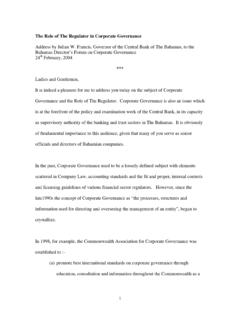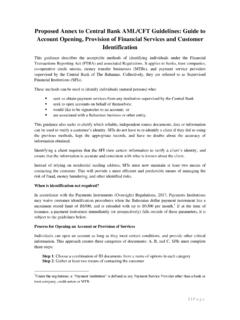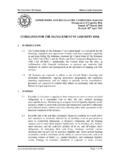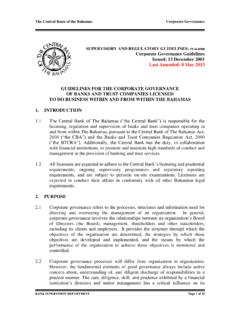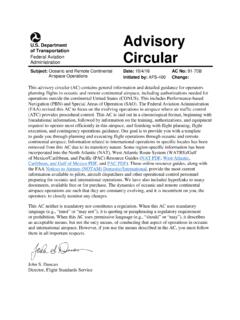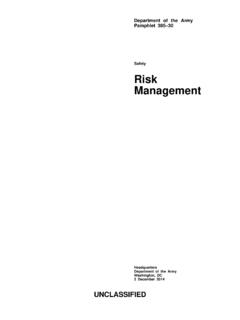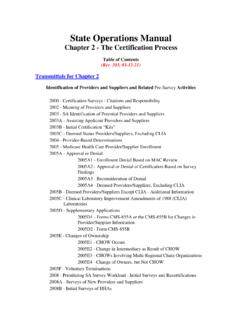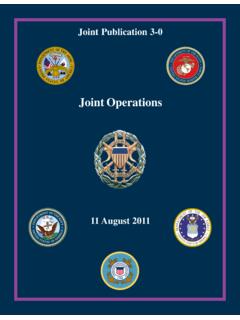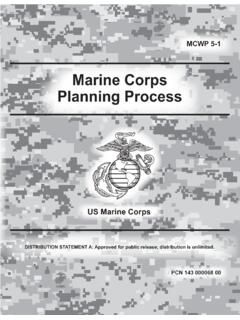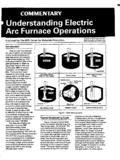Transcription of A GUIDE TO THE CENTRAL BANK’S ON-SITE …
1 The CENTRAL Bank of The Bahamas Examination Process BANK SUPERVISION DEPARTMENT Page 1 of 8 SUPERVISORY AND REGULATORY GUIDELINES: PU41-0208 Examination Process Issued: February 14th, 2008 A GUIDE TO THE CENTRAL BANK S ON-SITE EXAMINATION PROCESS I. INTRODUCTION The CENTRAL Bank of The Bahamas ( the CENTRAL Bank ) is responsible for the licensing, regulation and supervision of banks and trust companies operating in and from within The Bahamas pursuant to the Banks and Trust Companies Regulation Act, 2000 and the CENTRAL Bank of The Bahamas Act, 2000. Additionally, the CENTRAL Bank has the duty, in collaboration with financial institutions, to promote and maintain high standards of conduct and management in the provision of banking and trust services. All licensees are expected to adhere to the CENTRAL Bank s licensing and prudential requirements, ongoing supervisory programmes and regulatory reporting requirements, and are subject to periodic ON-SITE examinations.
2 Additionally, licensees are expected to conduct their affairs in conformity with all other Bahamian legal requirements. II. PURPOSE The CENTRAL Bank s regulatory oversight process emphasizes an ongoing supervisory approach, involving both off-site surveillance and ON-SITE examinations. The identification of excessive risk exposure and requiring implementation of actions to address and reduce those risks is a primary goal of the risk-based supervision framework employed by the CENTRAL Bank in the examination process. Risk-based examinations permit Examiner judgment in determining the scope and depth of work to be performed for each activity or function of a specific licensee. The objective of this GUIDE is to promote awareness and enhance the transparency of the examination process for licensees and other interested parties and should be read in conjunction with the CENTRAL Bank s soon to be published Risk-Based Supervision Framework.
3 III. APPLICABILITY This GUIDE applies to all licensees. The CENTRAL Bank of The Bahamas Examination Process BANK SUPERVISION DEPARTMENT Page 2 of 8 IV. ON-SITE EXAMINATION PROCESS (1) Examinations Examinations are scheduled as part of the annual plan for examinations. The scope of an examination is determined as a result of the annual planning and ongoing supervisory process, as well as a pre-examination analysis. The scope of an examination can range, with respect to the degree of assessment, from targeted, special focus, to comprehensive. A specific assessment may also vary in its depth and detail. A comprehensive examination would include an assessment whether a licensee: 1) has adopted appropriate and effective policies, processes, and procedures to ensure compliance with applicable laws, regulations, supervisory guidelines, and best business practices; 2) the corporate governance process and its risk management and control program provide assurance that the risk in its business activities and operations are appropriately and effectively identified, measured, monitored and controlled; and 3) management and staff have appropriate experience, knowledge training, and technical skill to implement adequate compliance with applicable laws, regulations, supervisory guidelines and best business practices.
4 (2) Examination of Licensees regulated by both the CENTRAL Bank and the Securities Commission of The Bahamas ( Jointly Regulated Licensees ) In an attempt to better coordinate supervisory efforts and minimize overlaps in regulatory practices, the CENTRAL Bank and the Securities Commission of The Bahamas (the Securities Commission) have agreed a Joint ON-SITE Examination Programme (JEP) for the co-ordination of joint examinations of Jointly Regulated Licensees. The key objectives of the JEP are to streamline the examination activities by coordinating: the planning, timing and scope of examinations of these institutions; the reporting of examination findings and recommendations; and follow-up and enforcement actions, if any. As the primary regulator/supervisor for banks and trusts companies, the CENTRAL Bank will take the lead in co-ordinating the conduct of the joint ON-SITE examinations. Overall coordination and oversight of the JEP is the responsibility of a Joint Examinations Committee ( JEC ), comprising senior staff responsible for the planning and scheduling of ON-SITE examinations in the CENTRAL Bank and the Securities Commission.
5 The procedures for Jointly Regulated Licensees will broadly follow the outline below. However, where there are differences, these are highlighted. The CENTRAL Bank of The Bahamas Examination Process BANK SUPERVISION DEPARTMENT Page 3 of 8 ON-SITE examinations versus off-site surveillance The collection of information, monitoring and analysis entailed in the supervision of a licensee does not always require an ON-SITE presence, since Examiners can frequently review and evaluate specific reports submitted to the CENTRAL Bank. ON-SITE examinations and off-site surveillance complement each other. ON-SITE examinations enable an Examiner to, inter alia: i. test and reach a conclusion about the reliability of systems, controls and reports so that Examiners may reasonably rely upon the information provided for the off-site monitoring and analysis; ii. examine changes or anomalies disclosed by off-site surveillance and analysis; and iii.
6 Evaluate aspects of operations for which off-site surveillance of systems and control is insufficient. Examiners will make every effort to conduct as many pre-examination procedures as reasonably possible off-site in order to minimize disruptions to a licensee s normal business activities. Additionally, the planning process is mindful of a licensee s space and staff complement when deciding the size of the examination team. Ongoing supervision of all licensees is ensured through formal and informal communications by their respective Bank Supervision Department ( BSD ) Dealing Officers ( DO ). The DO s responsibilities include the off-site monitoring and analysis of conditions of their assigned licensees and advising BSD management, on an ongoing basis, of all matters that have a bearing on the operations of licensees. (3) Pre-examination planning An Examiner-in-Charge ( EiC ) is appointed to lead the examination team for each ON-SITE examination, who is responsible for the smooth operation of the assigned ON-SITE examination.
7 This responsibility encompasses the preparation of the Scope Letter and Scope Document (both of these documents are explained below), the timely fulfilment of requirements and objectives, and ensuring the Report of Examination ( RoE ) properly reflect the examination findings and recommendations. Depending upon the size and complexity of the examination, the EiC may arrange to meet with the licensee s senior management at a pre-examination meeting to assist the EiC for fact-finding and examination planning purposes. Prior to the commencement of an examination, the following documents must be completed: a) Notification/Scope Letter The CENTRAL Bank of The Bahamas Examination Process BANK SUPERVISION DEPARTMENT Page 4 of 8 Addressed to the Senior Official of a licensee, the Notification/Scope Letter includes a detailed list of information needed by the CENTRAL Bank to conduct: i) the off-site pre-examination analysis - this information is usually required approximately two weeks prior to the commencement of the ON-SITE examination; and ii) the ON-SITE examination information which is required ON-SITE at the commencement of the examination.
8 The Notification/Scope Letter also identifies the EiC and the commencement date of the planned examination and is generally sent to licensees at least six (6) weeks prior to the start of the examination. The CENTRAL Bank will send the Notification/Scope Letter for a Jointly Regulated Licensee and will include, as an attachment, a formal letter from the Securities Commission. b) Pre-examination analysis The EiC is responsible for the preparation of pre-examination analyses and the proposed scope of the examination. The EiC reviews and evaluates several sources of information to accomplish this task, including, but not limited to, the following: i. prior RoEs and work papers; ii. information resident in BSD files including audited financial statements, licensee quarterly reports, Corporate Governance Certificates and other pertinent information; and iii. the pre-examination information required of the licensee as detailed in the Notification/Scope letter.
9 Further factors evaluated by an EiC when determining the scope of an examination include: i. a licensee s risk profile; ii. the responses received from the licensee to the recommendations of prior RoE(s); iii. significant changes in a licensee s organisational structure, systems, products and regulatory requirements; and iv. reliance on independent testing performed by a licensee's external and internal auditors. The pre-examination analysis provides an EiC with the information necessary to define further the scope of an examination and for BSD management to decide on appropriate staffing of the examination team as well as to fine-tune the timeframe necessary to complete the examination objectives. The practice of defining the scope of examination provides a control on the examination process and documents the areas to be reviewed. To enhance the efficiency of the examination, once the scope has been determined, additional requests may be sent to a licensee, as appropriate, for detailed information such as departmental policies and The CENTRAL Bank of The Bahamas Examination Process BANK SUPERVISION DEPARTMENT Page 5 of 8 procedures, system access reports, and reconciliations that are applicable to the specific functions to be reviewed.
10 C) Internal Scope Document The EiC also prepares an Internal Scope Document, which includes detailed information on team member work assignments of an examination. (4) ON-SITE Examination Procedures a) Entry Meeting On the first day of the ON-SITE examination or as soon thereafter as can be practicably arranged, the examination team will hold an entry meeting with the licensee s senior management. This is an opportunity for the members of the examination team to introduce themselves to the senior managers and discuss assignments, examination scope and timeframes. The meeting also provides a licensee s senior management with an opportunity to ask questions or raise any concerns or issues associated with the examination. Cooperation and timely response by a licensee to Examiners requests will expedite the examination process. b) Amendment of Examination Scope An EiC may consider, during the course of an examination, that certain aspects and activities of a licensee require examination that is more detailed.

